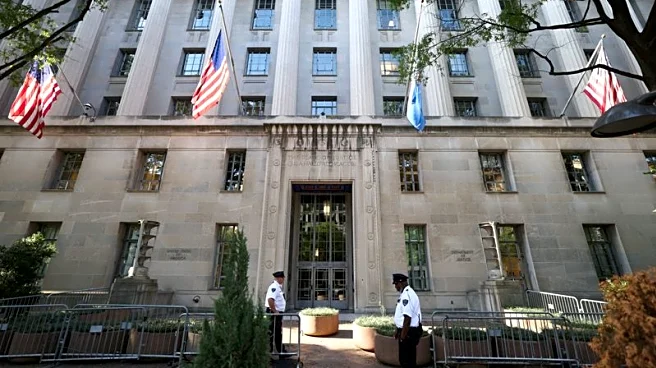What's Happening?
The U.S. government shutdown has entered its second month, with no resolution in sight. The shutdown has resulted in the furlough of approximately 750,000 federal employees, while others are working without
pay. Key services, such as the Supplemental Nutrition Assistance Program (SNAP), have been affected, and airports are experiencing flight disruptions. The political standoff continues as Democrats push for an extension of expiring tax credits for health insurance, while Republicans refuse to negotiate until the government is reopened. The shutdown has created significant uncertainty in the U.S. economy, affecting both federal operations and public services.
Why It's Important?
The prolonged government shutdown has far-reaching implications for the U.S. economy and society. The disruption of federal services and the financial strain on federal employees could have a ripple effect on local economies and consumer spending. The political deadlock highlights deep divisions in Congress, which could impact future legislative negotiations and public trust in government. The shutdown also raises concerns about the stability of essential services and the potential long-term effects on public welfare programs. The outcome of this standoff could set a precedent for how similar situations are handled in the future.













